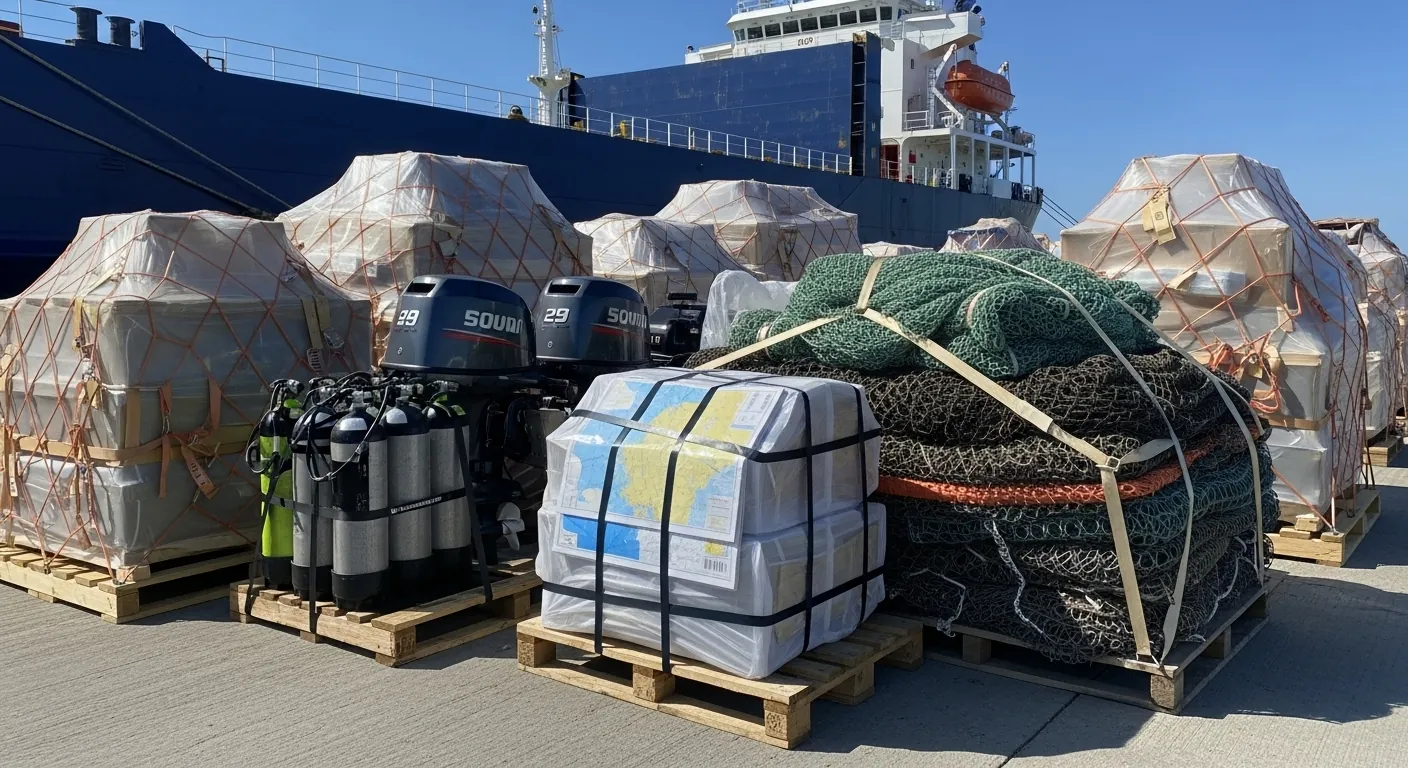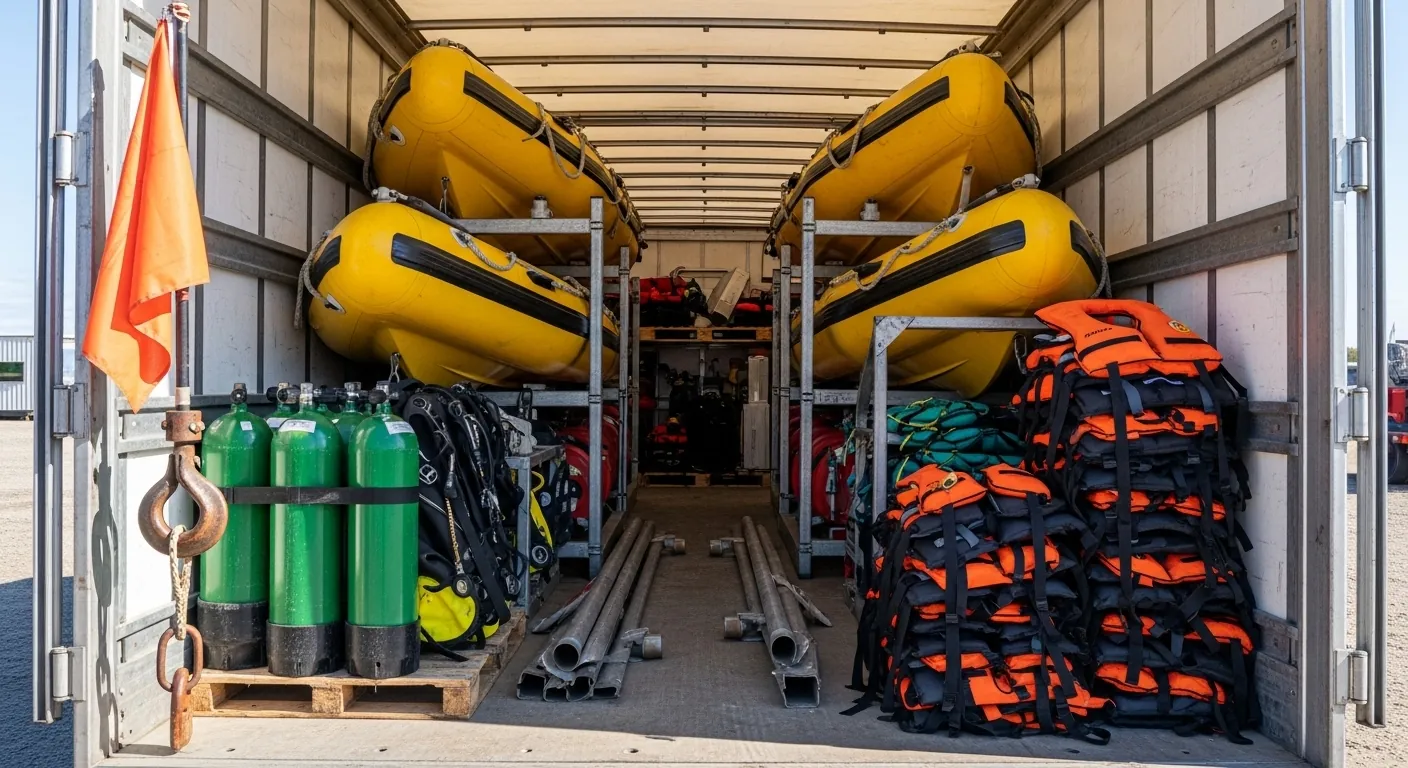
Shipping Marine Equipment and Supplies
Find tailored shipping solutions for marine equipment from FreightCenter
Our team of logistics experts tailor your marine equipment shipment to meet all your needs, ensuring timely and secure delivery for your next boating adventure.
Explore Related Shipping Options:
Shipping Outboard Motors Shipping Boat Docks Shipping Boat Trailers Shipping Beach EquipmentShipping Marine Equipment – Easy and Affordable with FreightCenter
Shipping Marine Equipment? Whether you’re a supplier delivering components, a contractor transporting gear, or a business relocating specialized marine tools, ensuring your marine equipment arrives safely and on time is critical.
At FreightCenter, we specialize in handling oversized, heavy, and uniquely shaped freight – like engines, winches, anchors, navigation systems, and other marine equipment – with precision and care. With over 25 years in the industry and trusted partnerships with top regional and national carriers, we simplify the shipping process by helping you compare rates, coordinate pickups and deliveries, and ensure your marine equipment reaches its destination securely and efficiently.
Thousands of businesses trust FreightCenter to move their freight faster, smarter, and cheaper! From unbeatable rates to top-notch service, our customers are raving about their shipping success.
See why they keep coming back!
Award-Winning Service, Trusted by Shippers Everywhere!
- 2021, 2017 & 2016 Food Logistics’ Top Green Providers
- 2021 & 2018 Supply & Demand Chain Executives’ Pros to Know: Matthew Brosious
- 2020 & 2019 Top Food Logistics’ 3PL & Cold Storage Provider Award
- 2020 & 2019 Business Observer’s Top 500 Companies on the Gulf Coast
- 2020 & 2017 SmartWay® Transport Partner
- 2020 & 2017 Food Logistics’ Champions: Rock Stars of the Supply Chain
- 2020 Best of Palm Harbor Awards for Local Businesses
- 2017 Green Supply Chain Award from Supply & Demand Chain Executive
- 2017 Tampa Bay Business Journal Heroes at Work
- 2016, 2015, & 2012 Food Logistics Top 100 Software and Technology Providers
- 2013 Tampa Bay Business 100 by Tampa Bay Business Journal
- 2013 Top 100 Great Supply Chain Partners by SupplyChainBrain
- 2012 TIA Samaritan Award Honorable Mention
- 2012, 2011 & 2010 TBBJ Fast 50 Recipient
- 2013, 2011, & 2010 Diversity Business Top Businesses
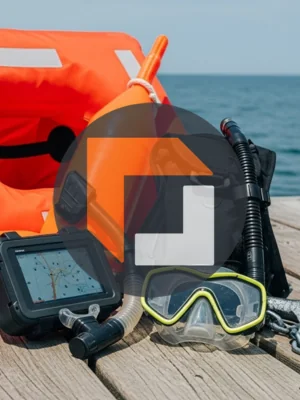
Why Choose FreightCenter For Marine Equipment Shipping
Excellent Tracking Tools
Our advanced tracking tools help you stay up-to-date on your marine equipment shipment from pickup to delivery. With accurate updates, automated notifications, and a user-friendly dashboard, you’ll have full visibility into every step of the shipping process – giving you what you want most – peace of mind and greater control over your logistics.
Scalable Solutions for Your Business
We offer scalable shipping solutions designed to grow with the needs of businesses, whether they’re shipping a few pallets a month or managing a nationwide distribution. With advanced logistics technology, we can easily adapt to changing shipping demands, expanding supply chains, or seasonal fluctuations. We are an ideal 3PL for companies of all sizes.
Dedicated Freight Experts & Customer Service
You’re not just booking a shipment, you’re gaining a partner in freight. An expert freight agent will work with you every step of the way, helping you plan routes, what shipment method you need, navigate customs for international shipments, and handle any special requests, from pick-up to delivery. Supporting our customers is our top priority. You can contact our team by phone, chat, or email before and after your shipment.
How to Ship Marine Equipment and Supplies with FreightCenter
Shipping marine equipment and supplies requires careful planning and adherence to certain guidelines. Here at FreightCenter, we provide the key steps to ship marine equipment and supplies efficiently:
Packaging and Preparation
Properly packaging and preparing marine equipment for freight shipping is essential to ensure its safe and secure transport. Start by thoroughly cleaning and inspecting the equipment to remove any contaminants such as salt, oil, or marine growth, which can cause corrosion or damage during transit. Choose appropriate packaging materials based on the equipment type—heavy-duty wooden crates, corrosion-resistant wraps, shock-absorbing materials, and waterproof barriers are often necessary.
For oversized or irregularly shaped items, custom crating or industrial-grade pallets may be required. All packaging should be durable enough to withstand handling, stacking, and shifting during transit, particularly in marine environments.
In addition to physical packaging, secure all movable parts and clearly label each package with handling instructions such as “Fragile,” “This Side Up,” or “Do Not Stack.” If the equipment contains hazardous materials (e.g., batteries or fuel residues), it must be labeled and documented in compliance with international regulations like the IMDG Code.
Include a detailed packing list and ensure each package is marked with the destination, contents, and weight. Proper preparation minimizes risk, ensures compliance, and helps avoid costly delays or damage.
Documentation
Prepare all necessary shipping documents for marine equipment, including commercial invoices, packing lists, and the bill of lading, ensuring that each document contains accurate and detailed descriptions of the shipped items.
By following these steps and partnering with a trusted freight company like FreightCenter, you can ensure a smooth and efficient shipping process for your marine equipment and supplies.
Cost to Ship Marine Equipment and Supplies
When it comes to shipping marine equipment and supplies, the cost can vary depending on several factors. Here are some key considerations that can influence the cost of shipping:
Size and Weight: The size and weight of the marine equipment and supplies significantly determine the shipping cost. Larger and heavier items may require specialized handling and transportation, resulting in higher shipping expenses.
Distance: The distance between the origin and destination is another important factor. Longer shipping distances generally incur higher costs due to increased fuel consumption, transportation time, and potential route complexities.
Transportation Mode: Your transportation mode will also impact the shipping cost. Options include ground shipping, air freight, or ocean freight. Each mode has its own cost structure and associated factors to consider, such as speed, capacity, and accessibility.
Packaging Requirements: Proper packaging is essential to protect marine equipment and supplies during transit. The packaging materials, such as crates, containers, or pallets, can add to the overall shipping cost.
Additional Services: Additional services, such as insurance coverage, tracking capabilities, and expedited delivery, may incur extra charges but can provide added peace of mind and convenience.
To determine the specific cost of shipping your marine equipment and supplies, it is recommended to request a quote from FreightCenter or consult with our shipping experts. They will consider the unique characteristics of your shipment and provide you with an accurate cost estimate based on your requirements.
To create value for our customers by delivering customized shipping solutions that meet their unique needs and to fulfill shipping demands from simple to complex with expertise, guidance and ingenuity.
Your marine equipment is valuable, and protecting them during transit is crucial. FreightCenter offers customizable freight insurance options to give you peace of mind. In the rare event of damage or loss, our insurance plans ensures you're covered, minimizing risks and financial impacts.
Accurate freight classification is key to receiving fair and transparent shipping rates. Our easy-to-use Freight Class Calculator helps you determine the correct freight class for your marine equipment shipment based on the size, weight, and product type. This tool simplifies the quoting process and ensures you avoid costly reclassification fees.
For businesses shipping large quantities of marine equipment, FreightCenter offers volume shipping discounts. By consolidating your shipments and working with our network of carriers, you can lower costs without sacrificing reliability or speed.
Cross borders with ease! Our international shipping services connect you to top carriers for seamless ocean, air, and cross-border freight. Whether importing or exporting, we handle the logistics so your marine equipment arrives safely and on time.

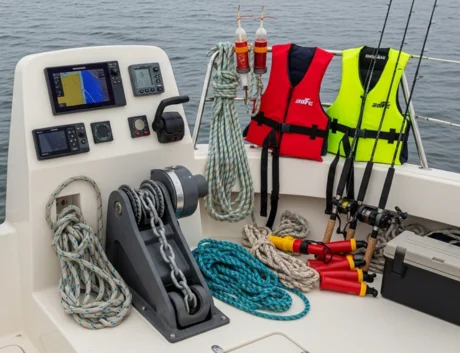
FreightCenter is an Expert in Marine Equipment Shipping
FreightCenter knows how important it is to get marine equipment to shelves or docks in a timely manner. With our 25+ years of industry expertise, we offer specialized shipping solutions to ensure the marine equipment is properly packaged, safely transported, and delivered to their destination.
We work with carriers that have the knowledge of what it takes to ship bulky, heavy equipment. We prioritize high-quality customer service without breaking the bank. We offer competitive rates from regional and national carriers so that you receive the services you need at the price you want. To find out which shipping option is most suitable for you and your marine equipment, call our expert freight agents today at (800)716-7608.
FAQ: Shipping Marine Equipment
Q. How do I get a shipping quote for my marine equipment?
Getting a quote is easy! Use FreightCenter’s online freight rate calculator to enter your shipment details, including dimensions, weight, and the origin and destination ZIP codes.
Q. What shipping methods are available for marine equipment through FreightCenter?
We offer a wide range of transportation methods, including full truckload (FTL), less-than-truckload (LTL), air, and ocean freight services.
Q. What type of marine equipment can I ship with FreightCenter?
With FreightCenter, you can ship items like anchors, navigation systems, ropes, winches and more!
Q. Can I ship marine equipment internationally with FreightCenter?
Yes, FreightCenter can ship marine equipment internationally and will assist in obtaining the proper documentation and compliance with customs regulations so that your shipment is delivered successfully and stress free.
Q. Do I need to insure my marine equipment shipment?
While it isn’t required, FreightCenter highly recommends it. Not only does it provide peace of mind, but protects your shipment in the rare case of damage or loss.
Q. Can I track my beach equipment with FreightCenter?
Yes, all you need to do is enter your shipment ID on FreightCenter’s tracking page to monitor the status of your shipment.
Q. Are there specific packaging requirements for marine equipment?
Yes, use waterproof containers, secure items to pallets, and include cushioning materials to prevent damage.
Q. Can I ship marine equipment to a shipyard or a marina location with FreightCenter?
Yes, FreightCenter can coordinate deliveries to shipyards or other hard-to-reach areas like marinas. These areas may be considered limited-access locations so it’s important to discuss with your freight agent.
Q. Does FreightCenter offer white glove services for high-value marine equipment?
Q. Is it possible to ship solar-powered marine equipment with FreightCenter?
Yes, but items containing lithium batteries must follow proper labeling and packaging according to FAA and DOT guidelines.
Q. How long does it take to ship marine equipment with FreightCenter?
Transit time varies based on distance, shipping method, and carrier availability. Standard LTL shipments typically take 3-7 days.
Q. Are there any regulations for shipping marine equipment?
If the marine equipment contains fuel, batteries, pressurized containers, or other hazardous substances, it must comply with DOT and HazMat Regulations.
Q. Can I schedule recurring shipments for marine equipment with FreightCenter?
Yes, FreightCenter can create a recurring shipping schedule tailored to your specific needs.
Q. What do I do if my marine equipment is damaged during shipping?
If your marine equipment arrives damaged, document the damage immediately, take photos, and file a claim within the carrier’s required timeframe.
Three Things You Didn't Know About Shipping Marine Equipment

Custom Crating Is Key
Most marine gear requires custom crating and shock-resistant packaging to handle bumpy transport routes whether it be on the road or on the water. FreightCenter provides tips and tricks on the best and safest way to ship your marine equipment.

Temperature Control Is Critical
Marine equipment like sonar arrays or radar dishes, need to be shipped in climate-controlled containers. Even a brief exposure to condensation or humidity can short-circuit systems or degrade calibration. FreightCenter's temperature-controlled shipping services can protect your marine equipment.
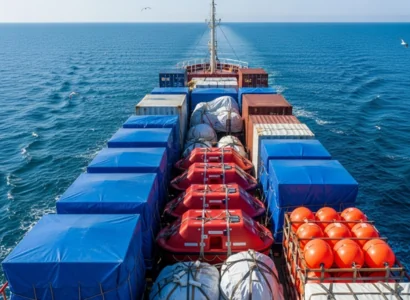
Alot of Marine Equipment is Shipped Via Ship
Most marine equipment is shipped by sea, especially larger marine equipment. This is because of it's global reach and capacity while being a cost-effective option. If shipping bulk or larger marine equipment like buoys or anchors, FreightCenter offers ocean freight services.

